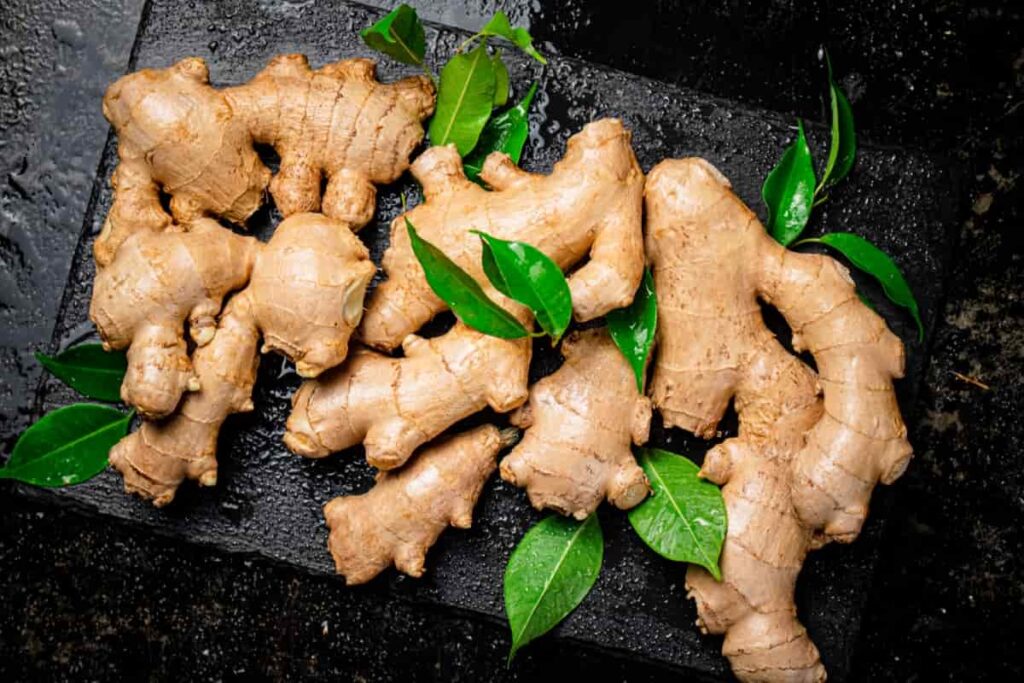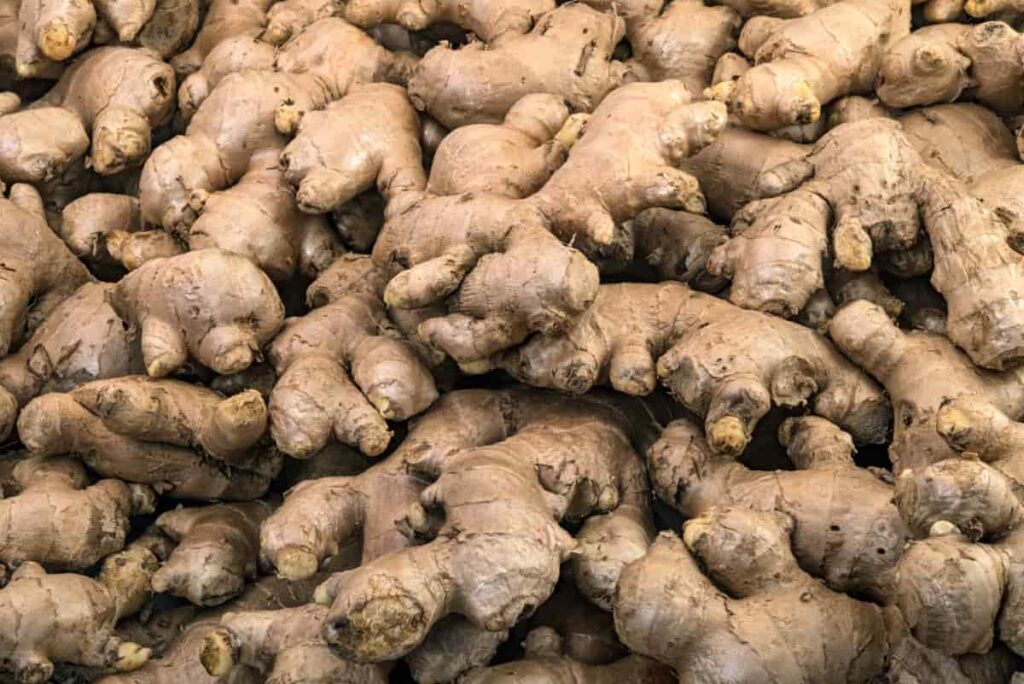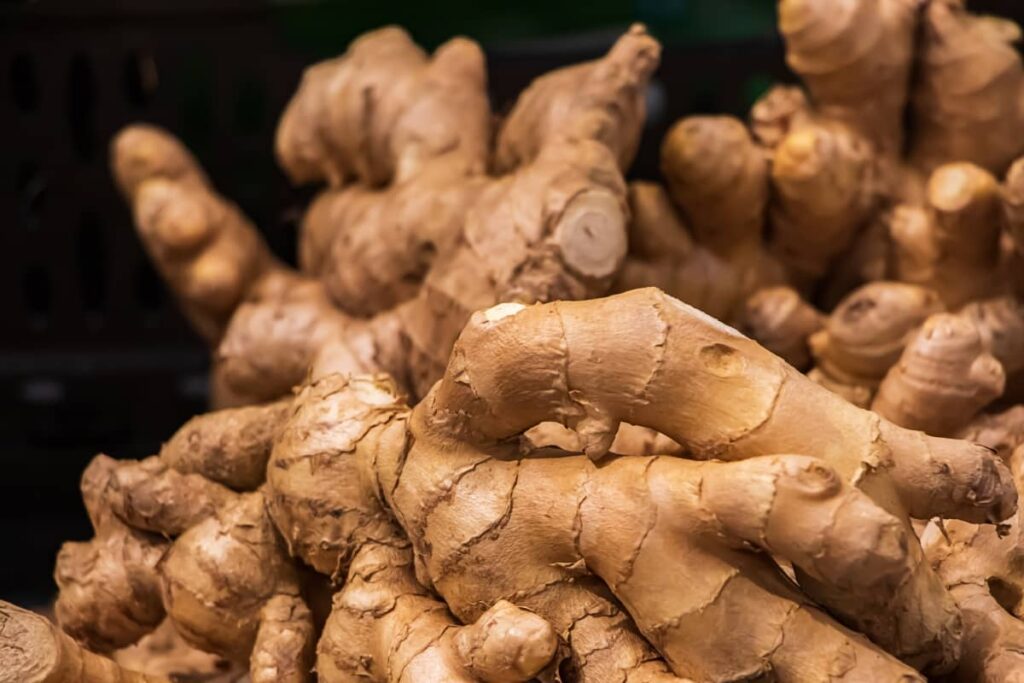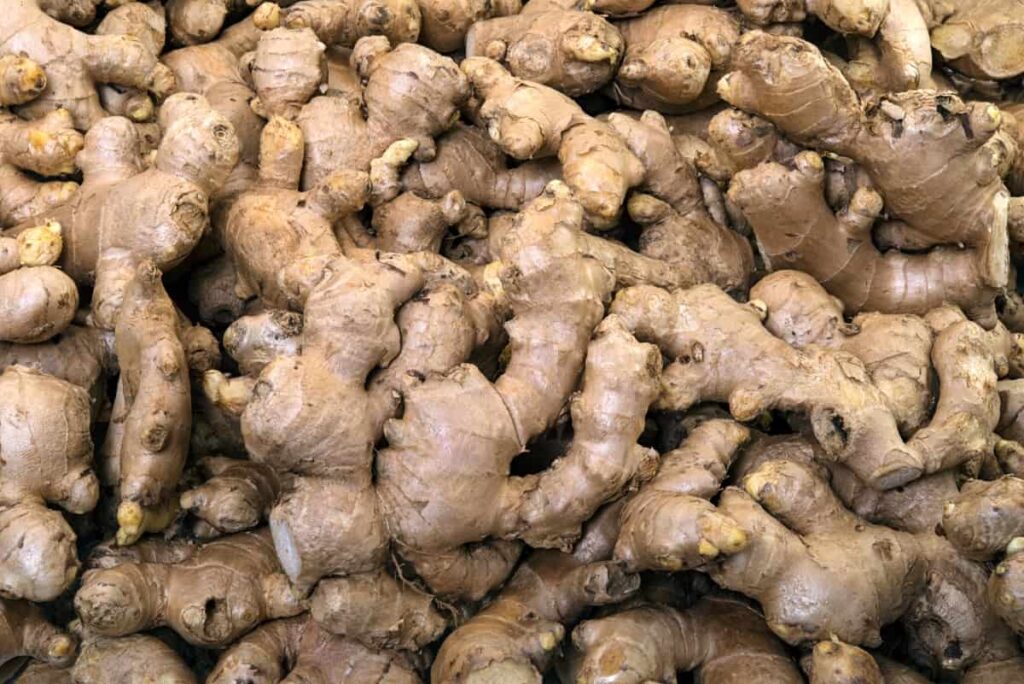Ginger, a widely used spice in India, has a unique cultivation process, with costs varying across different states. This blog will explore the average production cost of ginger cultivation per acre in various Indian states. We aim to provide clear insights into the expenses involved, from planting to harvesting, helping farmers and agriculturists make informed decisions. Understanding these state-wise costs is vital for optimizing production and ensuring profitable ginger farming in India’s diverse agricultural landscape.

Ginger Cultivation in India
Ginger is a spice crop that is widely grown in India for its aromatic rhizomes. Ginger has many medicinal and culinary uses and is an important ingredient in many Indian dishes. Ginger cultivation requires a warm and humid climate, well-drained loamy soil, and adequate irrigation and fertilization.
Ginger can be grown as a pure crop or as an intercrop with other crops such as coconut, areca nut, coffee, rice, chilies, vegetables, etc. Ginger is propagated by using pieces of rhizomes called seed or planting material. The following are some of the costs involved in ginger cultivation in India.
Land Preparation Costs for Ginger Cultivation
Land preparation is an important step in ginger cultivation as it helps to improve the soil structure, drainage, and fertility. Land preparation involves plowing, harrowing, leveling, and making ridges and furrows or beds. The cost of land preparation depends on the size of the land, the type of soil, the availability of labor and machinery, and the method of cultivation. The average cost of land preparation for ginger cultivation in India was Rs. 4,500 per Acre.
Cost of Seed and Planting Material
The cost of seed or planting material is another major component of ginger cultivation cost. The quality and quantity of seed or planting material affect the yield and quality of ginger. The seed or planting material should be healthy, disease-free, well-developed, and sprouted. The seed rate for ginger cultivation is about 1.5 to 2 tonnes per hectare. Different varieties are preferred in various states, like IISR and Suprabha in Tamil Nadu and Mahim in Maharashtra.
Yield varies by variety, with some, like Nadia and Maran, yielding up to 25-30 tons per hectare. The cost of seed or planting material varies depending on the source, season, variety, and demand. The average cost of seed or planting material for ginger cultivation in India was Rs. 25,000.
Fertilizer and Nutrient Management Costs
Fertilizer and nutrient management are essential for ginger cultivation as it helps to enhance the growth, development, and yield of ginger. Ginger requires adequate amounts of nitrogen, phosphorus, potassium, calcium, magnesium, sulfur, zinc, boron, manganese, iron, copper, and molybdenum for optimum production.
In case you missed it: Millets Cultivation Cost Per Acre in India: Exploring State-Wise Average Production Cost

Fertilizer and nutrient management costs include the cost of organic manures like farmyard manure, compost, vermicompost, green manure, etc., chemical fertilizers such as urea, diammonium phosphate, muriate of potash, etc., biofertilizers such as rhizobium, azospirillum, etc., micronutrients such as zinc sulfate (ZnSO4), borax etc., and foliar sprays such as humic acid etc. The average cost of fertilizer and nutrient management for ginger cultivation in India was Rs. 15,000.
Costs Associated with Pest and Disease Management
Ginger is susceptible to pests and diseases that can reduce its yield and quality. Some of the common pests are shoot borer, rhizome scale, nematodes, and white grub. Some of the common diseases are bacterial wilt, soft rot, leaf spot, and rhizome rot. To control these pests and diseases, ginger farmers need to adopt various preventive and curative measures
- Selecting healthy and disease-free seed rhizomes
- Treating the seed rhizomes with fungicides and insecticides before planting
- Practicing crop rotation and intercropping with legumes or cereals
- Applying organic manures and biofertilizers to enhance soil health and immunity
- Maintaining proper spacing, irrigation, drainage, and weed control
- Spraying neem oil, garlic extract, or other botanical pesticides as needed
- Removing and destroying infected plants and rhizomes
The plant protection charges for ginger cultivation in India are about Rs. 3,000 per acre.
Labor Costs in Ginger Cultivation
Ginger cultivation requires a lot of labor for various operations such as land preparation, planting, weeding, earthing up, harvesting, cleaning, and grading. The labor requirement and cost may vary depending on the region, season, availability, and wage rate. According to Krishijagran.com, the labor cost for ginger cultivation in northern states of India is lower than that in southern states such as Kerala and Karnataka. This is one of the reasons why ginger production is more profitable in northern states.
Machinery and Equipment Costs
Ginger cultivation only requires a little machinery and equipment, as most of the operations are done manually. However, some farmers may use tractors, plows, harrows, ridgers, sprayers, etc., for land preparation, irrigation, and plant protection. The cost of machinery and equipment may vary depending on the type, size, quality, and availability. Machinery and equipment used for ginger cultivation are:
| Tractor | Rs. 5 lakh to Rs. 10 lakh |
| Plough | Rs. 15,000 to Rs. 25,000 |
| Harrow | Rs. 10,000 to Rs. 15,000 |
| Ridger | Rs. 5,000 to Rs. 10,000 |
| Sprayer | Rs. 2,000 to Rs. 5,000 |
Post-Harvest Handling and Transportation Costs
After harvesting, ginger rhizomes need to be cleaned, dried, graded, packed, and transported to the market or processing units. These activities involve some costs such as:
| Cleaning | Rs. 500 to Rs. 1,000 per ton |
| Drying | Rs. 1,000 to Rs. 2,000 per ton |
| Grading | Rs. 500 to Rs. 1,000 per ton |
| Packing | Rs. 1,000 to Rs. 2,000 per ton |
| Transportation | Rs. 2,000 to Rs. 5,000 per ton |
Costs of Marketing and Selling Ginger
Ginger can be sold in fresh or dry form in local or distant markets or processing units. The costs of marketing and selling ginger may include:
| Commission | Rs. 500 to Rs. 1,000 per ton |
| Loading and unloading | Rs. 500 to Rs. 1,000 per ton |
| Storage | Rs. 500 to Rs. 1,000 per ton |
| Taxes | Rs. 500 to Rs. 1,000 per ton |
In case you missed it: Cotton Cultivation Cost Per Acre in India: Exploring State-wise Average Production Cost

Profit and Expense
- Expenses include land preparation, seeds, manure, labor, irrigation, pest management, and miscellaneous costs, totaling around ₹55,000 to ₹85,000 per acre.
- Profit depends on yield and market prices, with potential revenue of around ₹4,50,000 per acre and net profit between ₹3,65,000 to ₹3,95,000.
| Expense Category | Approximate Cost per Acre (INR) |
| Land Preparation | ₹5,000 to ₹7,000 |
| Seed Material (Rhizomes) | ₹10,000 to ₹15,000 |
| Manure and Fertilizers | ₹7,000 to ₹10,000 |
| Labor | ₹20,000 to ₹30,000 |
| Irrigation | ₹5,000 to ₹10,000 |
| Pest and Disease Management | ₹5,000 to ₹8,000 |
| Miscellaneous Expenses | ₹3,000 to ₹5,000 |
| Total Cost of Cultivation | ₹55,000 to ₹85,000 |
Ginger Growing States
Major ginger-producing states include Kerala, Karnataka, Andhra Pradesh, Odisha, Assam, Meghalaya, West Bengal, Mizoram, Himachal Pradesh, and Uttar Pradesh.
State-Wise Ginger Cultivation Cost Per Acre
The top five ginger-producing states in India are Kerala, Karnataka, Assam, Meghalaya, and Arunachal Pradesh, accounting for over 80% of the total ginger production. Estimating the cultivation cost per acre for each state, which includes land preparation, seed material, planting, irrigation, fertilization, plant protection, harvesting, and post-harvesting, is crucial. The cost may vary based on region, soil type, climate, yield, and market price of ginger.
| State | Cultivation Cost Per Acre (INR) |
| Kerala | 1,50,000 |
| Karnataka | 1,20,000 |
| Assam | 1,00,000 |
| Meghalaya | 90,000 |
| Arunachal Pradesh | 80,000 |
In case you missed it: Wheat Cultivation Cost Per Acre in India Exploring State-wise Average Production Cost

Conclusion
In India, the cost of ginger cultivation per acre varies significantly across states, ranging from Rs. 80,000 in Arunachal Pradesh to Rs. 1,50,000 in Kerala. This variation reflects the diverse agricultural practices and regional differences in climate, soil type, and farming expenses, highlighting the importance of state-specific strategies for ginger farmers.
- Sheep Farming Business Plan for Beginners
- Aquaponic Farming at Home: A Step-By-Step Guide
- Profitable Village Farming Business Ideas in 2024
- High-Yield Aquaculture: Fast-Growing Fish for Farming
- Effective Fish Pond Construction Techniques for Beginners
- Irrigation and Water Management in Pineapple Farming
- Blossom to Harvest: Mastering Flowering and Pollination in Papaya Farming
- Pig Fattening Essentials: From Selection to Sale for Beginners
- Raising Wagyu Cattle: A Complete Guide for Premium Beef Production
